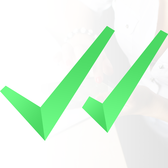How We Created A Product Based On A Meme and Made $100K
Hello! Who are you and what business did you start?
We’re Davis Harari and James Reina and we’re the co-founders of The Nut Button.
So, what is The Nut Button?
Our core product is a push button toy based off of the popular “NUT” meme. Our success is largely due to the inherently viral nature of the product - when people see a funny meme, they want to share it with their friends.
Likewise, when customers purchase our button, they take pictures/videos of it and show it off to their friends. This makes advertising extremely simple for us — up until recently, we spent close to nothing on marketing, as our customers were our built-in marketing team.
We know that this is a “dumb” product - however, our approach to the company is anything but. We’re currently operating at a 65% profit margin and are on pace to do a little over $200,000 in sales in 2019, 75% of which is passively through Amazon FBA.

Download the report and join our email newsletter packed with business ideas and money-making opportunities, backed by real-life case studies.

Download the report and join our email newsletter packed with business ideas and money-making opportunities, backed by real-life case studies.

Download the report and join our email newsletter packed with business ideas and money-making opportunities, backed by real-life case studies.

Download the report and join our email newsletter packed with business ideas and money-making opportunities, backed by real-life case studies.

Download the report and join our email newsletter packed with business ideas and money-making opportunities, backed by real-life case studies.

Download the report and join our email newsletter packed with business ideas and money-making opportunities, backed by real-life case studies.

Download the report and join our email newsletter packed with business ideas and money-making opportunities, backed by real-life case studies.

Download the report and join our email newsletter packed with business ideas and money-making opportunities, backed by real-life case studies.



















